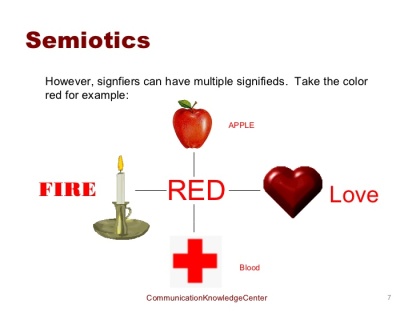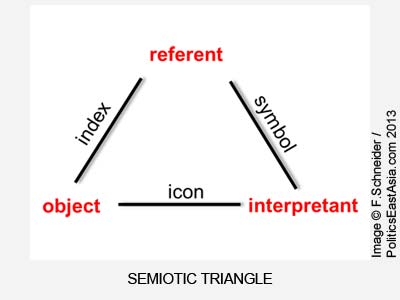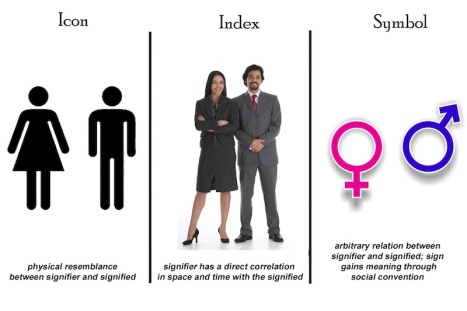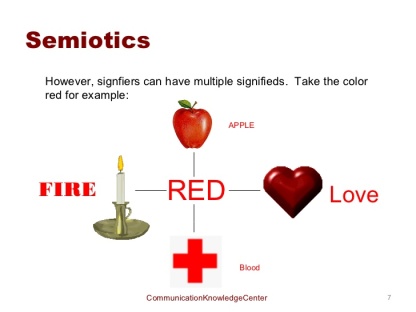Semiotics is the study of signs, meaning-making, and the study of meaningful communication. It includes the study of signs, symbols, meaning and the role that they play as part of social life. Semiotics are a crucial part to the way we communicate both linguistically and non-linguistically and how interact with our surroundings, they are also fundamental part of the media we see today and allow our understanding of it. Semiotics was first introduced by two men, a Swiss linguist and an American philosopher who theory’s are based on the correlation between a sign/symbol/object and the meanings we place on them.
Ferdinand Saussure, 1857 – 1923
Saussure was a Swiss linguist who suggested that relationship between a symbol and its meaning is based on the visual association and the word attributed to it. The signified (symbol/object) only has meaning because of the connection made to the signifier (the sign/word).
“the sign is the whole that results from the association of the signifier with the signified” – Saussure
The signified can have different signifiers, for instance the following diagram illustrates this with the word ‘Red’.

Charles Saunders Peirce, 1839 – 1914
Peirce was an American philosopher who in contrast to Saussure believed in a triad of representation as show in the diagram below.
Referent – form which the sign takes
Object – to which the sign the sign refers
Interpretant – idea, interpretation in mind

Peirce believed in three types of signs; icon, index, and symbol.
Icon – this is a sign or a picture where the meaning is in relation to the resemblance
Symbol – an object with no similarity or resemblance to its meaning.
Index – meaning is directly connected in some way to the image

A sign can have multiple interpretations of expression, for instance this picture below has a number of linguist terms and psychological responses; cat, kitty, cute, furry, pet, happy, feline, ect.

Sources:
- https://www.slideshare.net/gueste561ab/semiotics-1070205?qid=6d34e4d1-8b08-4853-88a0-08aee3859ca9&v=&b=&from_search=3
- https://www.slideshare.net/CommunicationKC/semiotics-for-beginners
- http://www.politicseastasia.com/studying/guide-to-the-theory-of-semiotics/
- https://www.youtube.com/watch?v=rEgxTKUP_WI
- http://visual-memory.co.uk/daniel/Documents/S4B/sem01.html

great work samuelparsonswebblog
LikeLiked by 1 person
Thanks M8
LikeLike